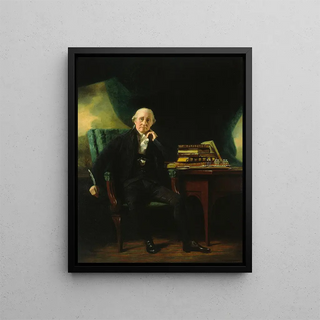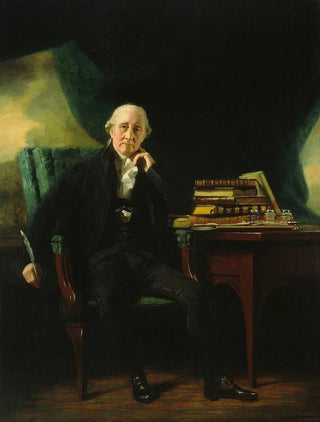Art print | Adam Rolland de Gask II - Sir Henry Raeburn


View from behind

Frame (optional)
In the world of art, some works transcend the mere frame to become silent witnesses of an era, a culture, and a personal history. The art print of Adam Rolland de Gask II - Sir Henry Raeburn is a perfect example, capturing not only the essence of an individual but also the spirit of a period marked by social and political upheavals. This portrait, created by Sir Henry Raeburn, reflects technical mastery and sensitivity that invite deep contemplation. Immersing oneself in this piece, the viewer is transported to 18th-century Scotland, where identity and social status take shape through painting.
Style and uniqueness of the work
Raeburn's style is distinguished by its realistic approach, blending fine detail with expressive characters. In this portrait, Adam Rolland de Gask II appears with a calm dignity, his gaze imbued with wisdom and reflection. The colors chosen by the artist, ranging from warm tones to darker shades, create an intimate atmosphere that envelops the viewer. The light, skillfully orchestrated, highlights facial features while playing with the textures of clothing, thus offering an almost tactile dimension to the work. The composition, both balanced and dynamic, guides the eye toward the main subject while hinting at a suggestive background, symbolizing a world in full transformation. This portrait does not merely depict a man; it tells a story, that of an individual rooted in his time, while leaving room for the imagination of each.
The artist and his influence
Sir Henry Raeburn, an emblematic figure of Scottish painting, knew how to mark his era with an innovative approach that combines tradition and modernity. Trained in a context where portraiture was a prized genre, Raeburn was able to emancipate himself to explore the psychology of his models. His work influenced many artists, both in Scotland and beyond, paving the way for a more human and less idealized representation of subjects. Raeburn's ability to capture the essence of his contemporaries, while infusing an emotional dimension, made him a master of...

Matte finish

View from behind

Frame (optional)
In the world of art, some works transcend the mere frame to become silent witnesses of an era, a culture, and a personal history. The art print of Adam Rolland de Gask II - Sir Henry Raeburn is a perfect example, capturing not only the essence of an individual but also the spirit of a period marked by social and political upheavals. This portrait, created by Sir Henry Raeburn, reflects technical mastery and sensitivity that invite deep contemplation. Immersing oneself in this piece, the viewer is transported to 18th-century Scotland, where identity and social status take shape through painting.
Style and uniqueness of the work
Raeburn's style is distinguished by its realistic approach, blending fine detail with expressive characters. In this portrait, Adam Rolland de Gask II appears with a calm dignity, his gaze imbued with wisdom and reflection. The colors chosen by the artist, ranging from warm tones to darker shades, create an intimate atmosphere that envelops the viewer. The light, skillfully orchestrated, highlights facial features while playing with the textures of clothing, thus offering an almost tactile dimension to the work. The composition, both balanced and dynamic, guides the eye toward the main subject while hinting at a suggestive background, symbolizing a world in full transformation. This portrait does not merely depict a man; it tells a story, that of an individual rooted in his time, while leaving room for the imagination of each.
The artist and his influence
Sir Henry Raeburn, an emblematic figure of Scottish painting, knew how to mark his era with an innovative approach that combines tradition and modernity. Trained in a context where portraiture was a prized genre, Raeburn was able to emancipate himself to explore the psychology of his models. His work influenced many artists, both in Scotland and beyond, paving the way for a more human and less idealized representation of subjects. Raeburn's ability to capture the essence of his contemporaries, while infusing an emotional dimension, made him a master of...






